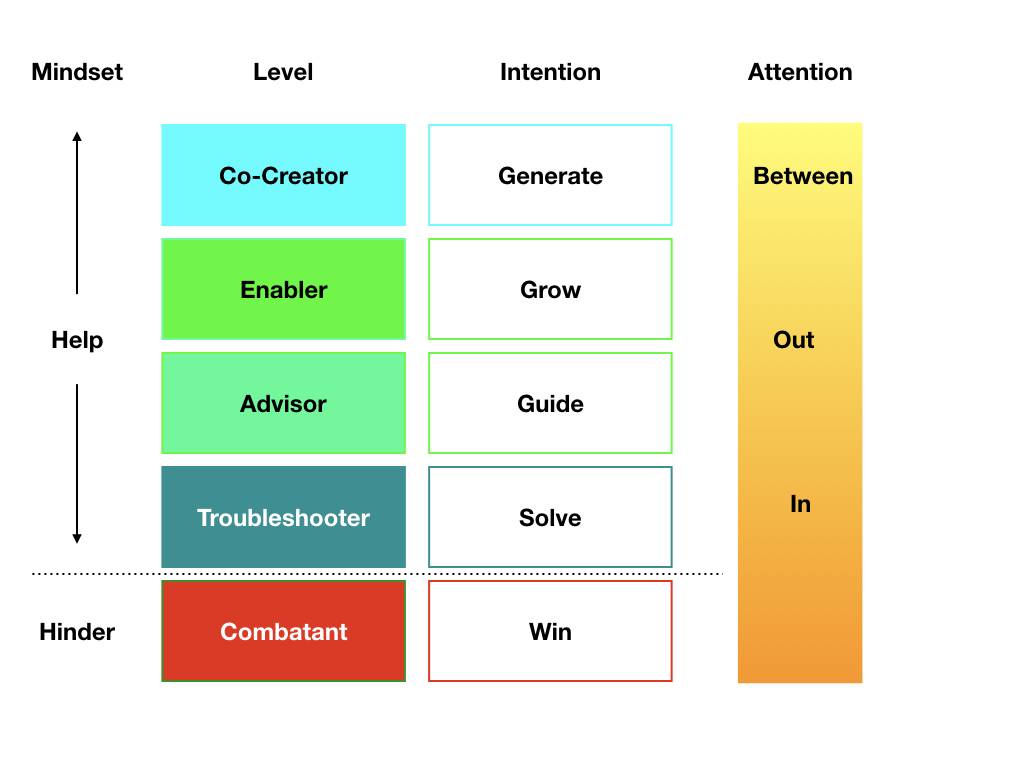Hey. This one’s for you if you’re a people leader, advisor, or if you’re simply keen to help people learn and grow.
If someone comes to you with a problem, how do you help? Do you tell them what to do, or do you get them thinking for themselves?
In my early days as a people leader, I thought my job was to know everything and to be the go-to expert for my team. Great for my ego, but not for sustained team performance. I thought I was helping them. Actually, I was just helping my ego, and spoon feeding them. Across the spectrum from delivery to discovery, it was all about delivery. Getting stuff done, but not a lot of learning. Spoon feeding, in the long run, teaches people nothing but the shape of a spoon. (Thanks E.M. Forster).
We need a broader definition of what it means to help. Most leaders and advisors nail troubleshooting and giving advice. But they’re not so great at helping people to learn. In a world that’s changing fast, we need to master the art of ongoing development. And, as leaders, our job is to help people do this.
“Intent determines impact.”
Five Levels of Intention
Here’s a model of five levels of intention. While each level serves a purpose, each higher level is a more sophisticated helping frame than the one preceding it. Less at the bottom, more at the top. At each level, your intention determines your impact.

Let’s look at these in turn. Start from the bottom, and work your way up. To help make sense of it, we’ll refer to the old saying “Catch a man a fish, feed him for a day. Teach a man to fish, feed him for a lifetime.”

Three Levels of Attention
On the right-hand side of the model, there are three levels of Attention. ‘Attention’ is another lens to help you discern and improve how you ask questions.
The first level is ‘Attention In’, which applies primarily to the first couple of levels in the ladder. Attention In is when you’re focused on yourself. It’s about feeding your own ego and your need to be right, to solve, and to help by giving answers. It’s mostly about you.
‘Attention Out’. When you’ve got your Attention Out, you’re focused primarily on ‘the other’, rather than you. You’re focused on helping them think more for themselves, as opposed to focusing on you solving the problem or giving advice. Paradoxically, your job becomes easier when you have Attention Out because you’re asking them to do the thinking. They actually appreciate it more, and they feel like they’re getting some attention.
The last level is ‘Attention Between’. At this level, you’re noticing not just them, but the dynamics at play in the conversation. What is the rapport like? What is the quality of connection like? What’s the communication like? What’s emerging in the conversation that could be paid attention to? What themes are at play here? What patterns? What possibilities are there that could be named and explored? It’s an ego-free, sophisticated way of operating which is extremely powerful.
Where’s your ‘centre of gravity’ on this model? The higher you can operate, the more effective you’ll be.
The Five Levels of Intention is a core idea that leaders learn to apply in my Conversations That Matter workshop series.
Keen to dig deeper? Here are a couple of other related links of you to dig deeper into.
Where’s Your Focus? explores a related idea: that you need a ‘possibility focus’ to enable transformation. Working at Enabler and Co-Creator is the place to start.
How To Be Curious. A series of posts on creating a more curious culture.
Like this post? You’re only getting half the story. Sign up to my ‘Thinking From The Edge’ newsletter, delivered monthly to your inbox.
Are you a Change Maker? Learn more about my Change Makers programme at one of our information breakfasts.



One thought on “Intent Determines Impact.”
Comments are closed.